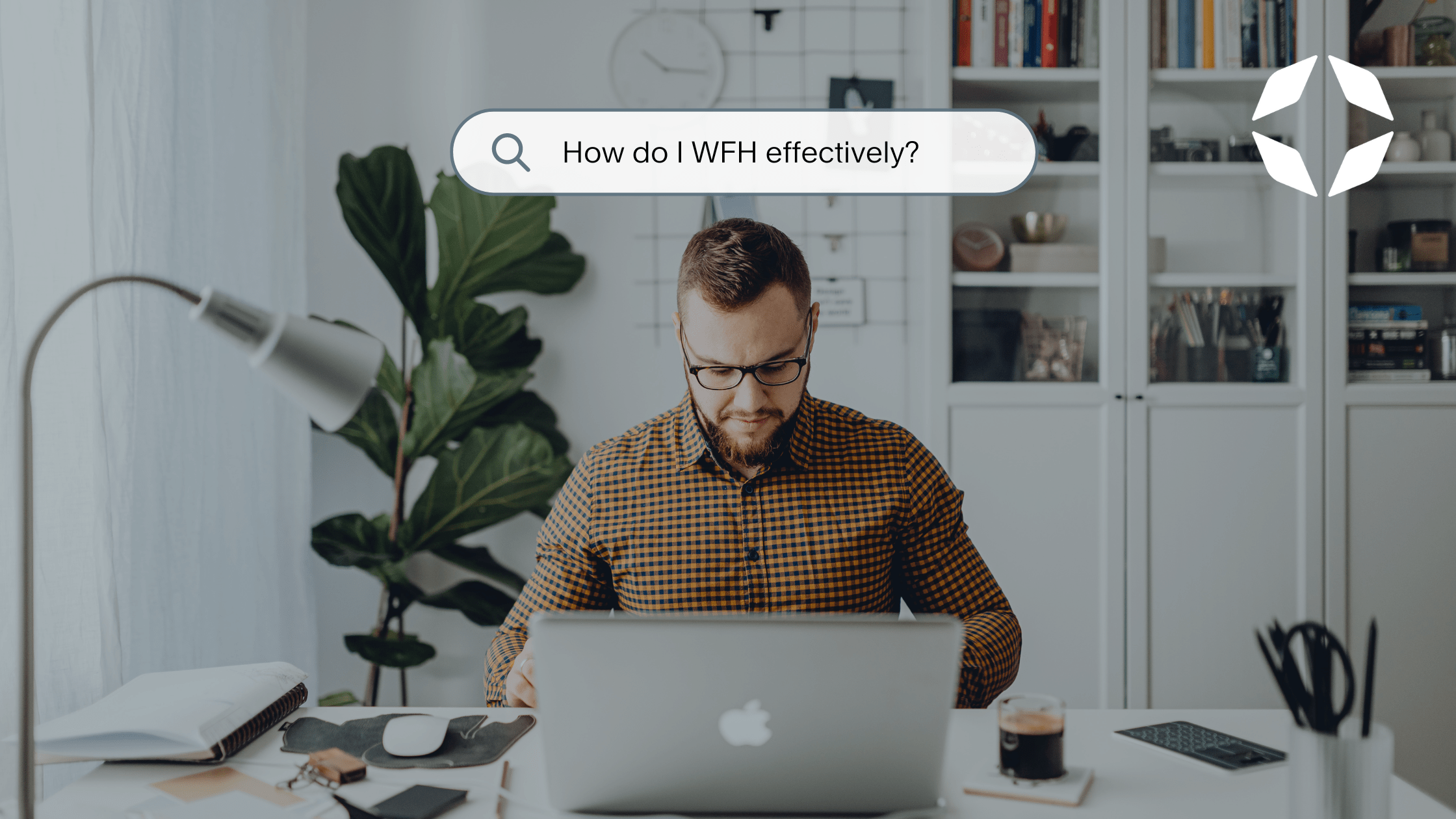April 21, 2023 By FCdevUser
How do I WFH effectively?
How do I WFH effectively?

I’m working from home now and need to learn how to do that effectively.
When you’re in the office and surrounded by work-related “triggers,” it’s natural to focus more on work than personal activities. But when you start working from home, you’re surrounded by personal triggers that can be distracting when you’re trying to do your job. It’s not practical to remove those triggers, but you can make some changes that can put you in the work mindset and thrive in the “WFH” lifestyle.
Create a space that’s only for work.
It’s ideal if you can dedicate a room as an office, but you might be restricted by space to the corner of another room. Try to isolate it with a divider or use a less-frequented area. Go there when you’re working, and don’t do any other activities in that space.
Get whatever tech you need to function well.
If the family or roommates are noisy, try to get a noise-cancelling headset that blocks sound in your ears and your microphone. Get lighting that works well for your desk time and good lighting for virtual meetings. Upgrade your Wi-Fi if bandwidth has become an issue. You might not be able to do everything at once, but prioritise and get what you need over time.
Dress for the office.
Sure, it’s comfortable to spend the day in your pajama bottoms, and nobody sees them when you’re on virtual calls. You don’t need formal business attire, but when you dress the way you would for the office before starting your workday, your mindset begins to shift towards work. When it’s over, change back into casual clothes.
Keep regular hours.
Depending on your job, decide when you’ll start your day and when you’ll finish. When you’re done, turn off your computer and phone if possible. That’s especially important in a home setting so you can give your full attention to whatever mode you’re in. Consider taking a walk around the block at the end of your day, so you have a “mini-commute” to make the transition to personal time.
Schedule regular breaks throughout the day.
When working from home, it’s easy to be distracted by work and from work. Schedule how long your work segments will be, then build in 15 to 20-minute breaks where you’re physically away from your office. Take the dog for a walk or grab coffee on the balcony, but don’t take your phone with you. Those small breaks will restore your energy and engagement when you step back into your workspace.
Don’t work extra just so people think you’re working.
It’s easy to wonder if others think you’re working when you’re remote, so there’s a temptation to work longer hours so people notice your commitment. Don’t fall into that people-pleasing trap, because it can build a pattern of unrealistic work. Instead, just do the work. Let the results speak for themselves.
Have a weekly coffee chat with different colleagues.
Set a 30-minute call with a different co-worker each week (including both home and office workers), just to touch base and see how you’re both doing. Don’t work on any projects; just make a human connection like you could in the office breakroom.
WFH has huge benefits, but the transition can be challenging. Be intentional about the process, and you’ll learn to “thrive” instead of “survive.”















